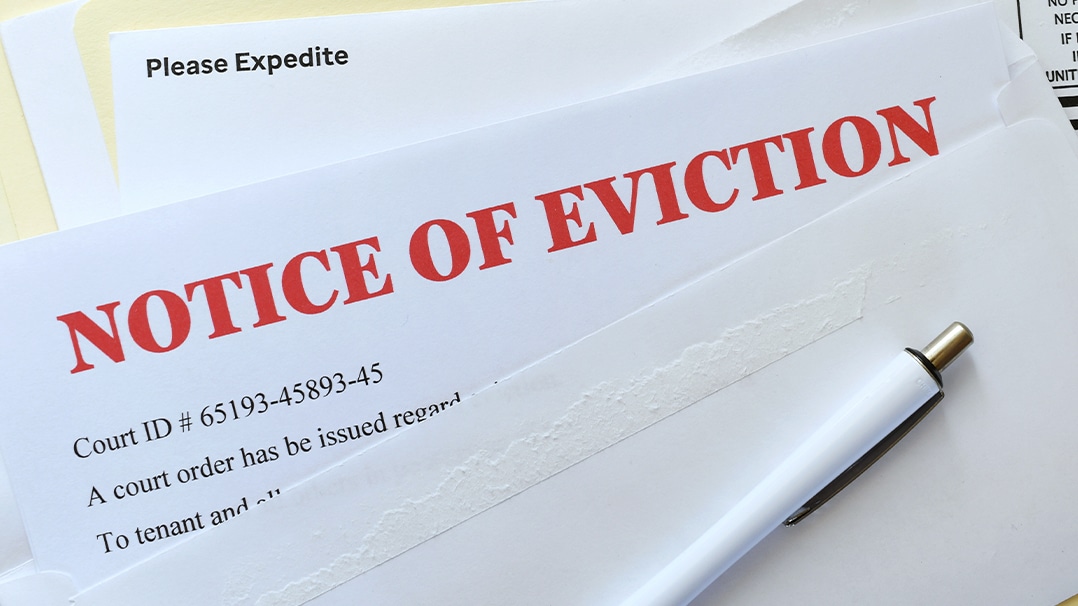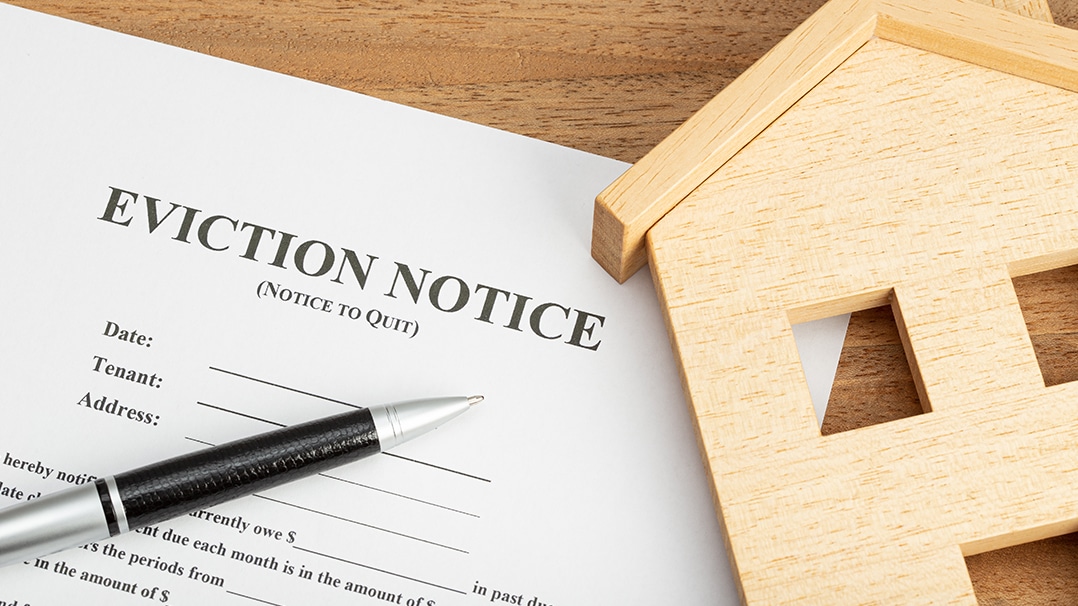
Ultimate Guide to Property Taxes in San Diego (Updated 2023)
May 5, 2023
Just Leased! 7,487 Kearny Mesa Office
May 12, 2023
Disclaimer: I am not an attorney and this article is not intended as a substitute for advice from the appropriate legal, zoning, financial, construction and/or tax professionals. This information is provided for educational purposes only and is made without warranties or representations
Just a few days ago, the city council of San Diego voted to approve a Tenant Protection Ordinance. The ordinance is viewed as highly controversial, with vocal opposition from landlords across the board. What does the ordinance do, though, and why are people up in arms about it? There’s a lot of very biased reporting out there, so let’s try to cut through the chaff and dig into what it really means.
What Does the Tenant Protection Ordinance Say?
Whenever there’s controversial legislation, it’s often a good idea to look to the source and read what the ordinance actually says rather than what people tell you it says. In this case, if you want to read the full text of the ordinance, you can find it here.
Of course, this is definitely not written to be readable. These kinds of ordinances have very specific legal language they have to follow, built up from centuries of habit, law, and formatting that make it very obtuse to the casual reader.
The first section of the PDF above simply runs down the facts. San Diego housing stock is aging (with 80% of it built before 1990, and much of it inaccessible to people with disabilities), rising rent prices across the board, and the simple fact that people in San Diego are becoming homeless at a faster rate than the homeless are finding homes. It also mentions the California state-level protections for tenants and how San Diego was exempt from those new protections due to the prior 2004-era protections still in place.

Consider:
“WHEREAS, the Council finds that from October 2021 to September 2022, for every 10 people who were unsheltered and found housing, another 13 people experienced homelessness for the first time in San Diego County, and 15,327 people became homeless for the first time while 11,861 people experiencing homelessness were connected with housing; and
WHEREAS, housing costs in the City have risen, with average rent prices increasing 46 percent from 2012 to 2019; and
WHEREAS, 50 percent of households are housing cost-burdened, meaning these households spend more than 30 percent of their income on housing costs; and
WHEREAS, 80 percent of the City’s housing stock was built before 1990, and most homes built before 1990 are not wheelchair accessible, which creates barriers to finding suitable housing for individuals with accessibility needs,”
The basic premise, when distilled down from the legalese, is this:
- San Diego has a short supply of housing
- The current supply of housing is aging and unsuitable for many people
- Opposition to new housing developments is high
- Outside corporations have been buying local housing and evicting tenants on thin pretenses
- Homelessness is increasing at an unprecedented rate and is the highest in the state
- Something has to change
So, why does it seem like nobody is happy and there’s widespread opposition from both sides of the situation? Moreover, why did the ordinance get passed anyway if everyone dislikes it?
Who is Affected by the New Tenant Ordinance?
The ordinance applies to residential tenants of rental housing and to landlords managing and leasing those residential properties. There are exemptions for mobile home tenants (protected under different ordinances) and those on short-term leases and similar agreements. The ordinance also does not apply to affordable housing, vacation rentals, hotels, and properties where landlords also live (such as when you’re renting out a spare room or half of a duplex.)
“The ordinance, however, does not apply to all renters. The protections do not extend to affordable housing, vacation rentals, hotels, residential care facilities, granny flats, or other properties where the landlord lives permanently. It also includes a carveout for certificates of occupancy issued within the last 15 years.” – Voice of San Diego.
The ordinance also does not apply to commercial landlords, but it does apply to landlords across the board, whether they own two or three homes they lease out or they own whole apartment complexes across the city.

The goal, as stated by the San Diego city council, is to provide stronger protections for tenants who have not violated their leases and who are current on rent, while putting negative pressure on entities that have been pursuing predatory evictions. It’s not really meant to be protection for people who violate their leases or fail to pay rent. It’s all meant to cut down on two things: predatory national or global-level interests buying property and evicting upstanding tenants and the increase in homelessness caused by unnecessary evictions.
When and How Does the New Ordinance Apply?
The new ordinance adds increased protections for tenants starting day one of a new lease, with the exception of short-term three-month leases.
As for how, it generally does two things.
First, it provides disclosure requirements. Any landlord looking to invoke a no-fault eviction (that is, an eviction where the tenant has not violated the lease, is current on rent, and there are no extenuating circumstances) must notify their tenants in writing and in full so they know their rights. While tenants should certainly strive to be educated on their rights, this disclosure pushes to ensure that whatever relevant, updated ordinances are in place are disclosed.

Second, it attempts to bring San Diego city protections more in line with state-level protections rather than keeping them based on a 20-year-old ordinance that is broadly no longer applicable to modern circumstances. While there are some differences between the state-level protections and the new city-level ordinance, they are much closer to one another than before.
Third, it adds relocation assistance to the eviction process. If a landlord chooses to pursue a no-fault eviction, they will be required to pay the tenant several months’ worth of contract rent as assistance for relocation, to help give them leeway to find new housing, provide a down payment as necessary, and cover moving fees. For most tenants, this is two months; for seniors and those on disability, it’s three.
There are, of course, a ton of specific definitions and situations that are defined in exhausting detail in the full text of the ordinance. I’m not a lawyer, so I’m not going to attempt to parse them all and lay them out in plain language; if you need legal advice, talk to an evictions specialist, not a real estate blog.
Why Are Landlords Mad About the Ordinance?
Landlords, in general, are irate about this ordinance because it puts more restrictions on them and it forces them to pay out to tenants they evict without just cause.
Many landlords object to being required to pay tenants months’ worth of contracted rent as relocation assistance when they evict tenants without just cause. It makes renting to tenants more difficult, requiring stricter measures to vet and evaluate tenants before signing a lease to protect the landlord from abuse of the property or from tenants who aren’t financially capable of maintaining rent and the property as necessary.
Further, putting the financial burden on landlords further incentivizes them to take properties off the market entirely rather than continue to rent them out, which could even decrease the available housing stock open to renters.

Landlords also argue that some of the definitions involved in the ordinance are vague, such as those of retaliation. If a tenant can automatically claim retaliation for an eviction and launch a lawsuit, it becomes a huge drain on landlord resources and suppresses their ability to remodel, improve, and otherwise update older housing stock throughout the city.
The Southern California Rental Housing Association also points out that relocation assistance applying across the board could end up becoming an unnecessary expenditure for landlords renting to high earners, draining their coffers for essentially no reason. They propose means testing as a solution, though they don’t say anything about who should do that testing or who should pay for the administrative burden of handling it.

Why Are Tenants Mad About the Ordinance?
Viewing the ordinance from the other side shows a different set of concerns.
Foremost among tenant concerns is that the ordinance has a lot of carveouts, exemptions, and limitations that mean a substantial population – including many of the more disadvantaged citizens of the city – aren’t protected. Some call for a complete halt on evictions entirely, such as what was signed in place during the COVID emergency. Others recognize that a complete moratorium is infeasible but still call for stronger protections across the board.
One of the biggest concerns is the exemption for “substantial remodels” of a property. While a lot of older housing stock in San Diego needs significant work to maintain habitability or improve it for accessibility, there is a subset of residential landlords who use these remodels as an excuse to evict tenants and then either never do the remodels, find an excuse to not perform them, or perform them simply to crank up the rent.

Indeed, one of the largest concerns of tenants (and even many landlords) is outside investors like Blackstone (based in New York) purchasing large blocks of housing, evicting long-standing tenants for no cause, and jacking up rent just for their own profits.
Tenants’ rights groups also argue that additional protections, like a Right to Return agreement, should be enforced as well. The text of the ordinance stipulates that a no-fault eviction should allow the tenant the opportunity to return within five years, if such notice is given in writing, but does not stipulate that rent won’t increase in the new lease. Landlords who decide to pull a large remodel to evict long-standing, low-rent tenants and bring them back (or bring back someone else) later with higher rents are still capable of doing exactly that.
Where to Draw the Line
The most difficult part of this entire situation is that both sides, of course, have valid concerns and perspectives, often at odds with one another. Many tenants don’t have the luxury, ability, or interest in circumventing the entire issue by purchasing a home, and many landlords are forced into unfavorable situations due to the realities of deferred maintenance, materials abatement, and necessary improvements.
While the ordinance is primarily developed with the goal of minimizing outside influences and unnecessary rent increases through loopholes, it’s a very difficult line to draw. There’s no such thing as a good answer that will leave everyone satisfied, especially when there will always be bad actors on both sides of the coin willing to exploit loopholes for their own benefit.
While San Diego’s city council passed the ordinance, there’s still plenty of opportunity for legal challenges, further discussions, and additional ordinances to cover various aspects of the rental markets and housing in general.

Perhaps the one area where there’s agreement about the ordinance is that the notice and transparency requirements are fine. They aren’t a significant burden on landlords – it’s just one more letter to send in the whole process of eviction – but it can be a significant benefit to tenants who should know their rights, and where those rights end and those of the landlord begin.
Above, I also mentioned that one of the issues in San Diego is strong opposition to building new housing, especially affordable housing. This particular ordinance doesn’t attempt to address this problem directly, so that will be a matter for future discussions.
Do Commercial Landlords Need to Worry?
About this ordinance? No. However, increasing tenant protections place a new source of stress on landlords of all types, including those who have portfolios of both residential and commercial (or hybrid) properties.

Some landlords will find that their properties are no longer sustainable or that the increased burden on one part of a portfolio means another part is better off sold. In cases such as these, it can be a great idea to have someone like me on your side to help sell the property for what it’s truly worth. So, if this ordinance (or anxiety about future ordinances) makes you worry about the long-term viability of your investment, and you want to sell now while the selling is good, or you just have a few questions about it, I’d love to hear from you. Just drop me a line, and we can get the ball rolling.

Erik Egelko is a veteran of the commercial real estate business with a specialized focus on Investment Property Sales. In 2021 and 2022, Erik was the #1 ranked Broker in California for one of the largest CRE Firms as well as ranked in the Top 1% of brokers nationwide. He has extensive experience in a variety of asset types including: Retail Shopping Centers, Medical Office Buildings, Industrial Properties, and Multifamily Apartment Complexes. Over the course of his career, Erik has closed over $100,000,000 of commercial property sales throughout Southern California.



